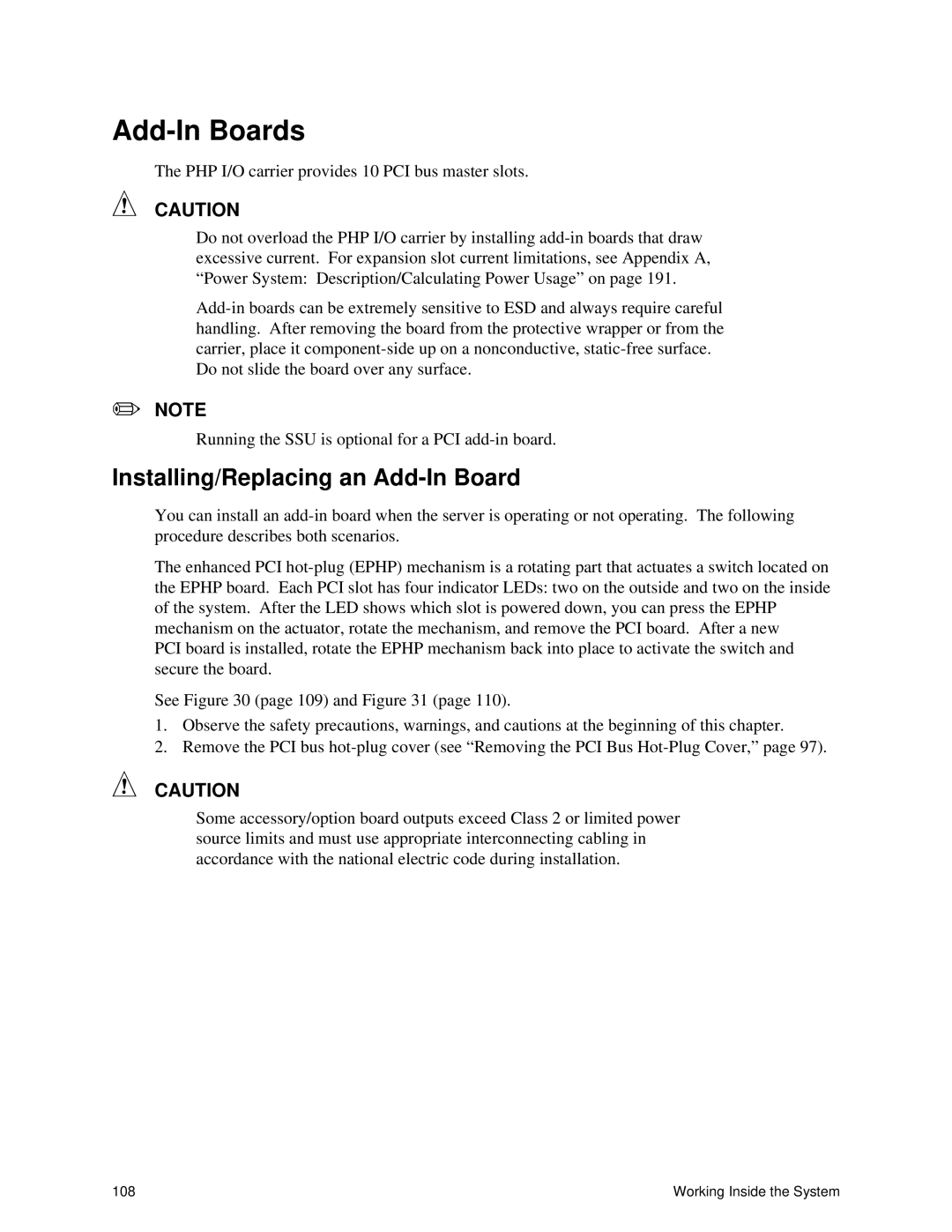Add-In Boards
The PHP I/O carrier provides 10 PCI bus master slots.
CAUTION
Do not overload the PHP I/O carrier by installing
Do not slide the board over any surface.
✏NOTE
Running the SSU is optional for a PCI
Installing/Replacing an Add-In Board
You can install an
The enhanced PCI
PCI board is installed, rotate the EPHP mechanism back into place to activate the switch and secure the board.
See Figure 30 (page 109) and Figure 31 (page 110).
1.Observe the safety precautions, warnings, and cautions at the beginning of this chapter.
2.Remove the PCI bus
CAUTION
Some accessory/option board outputs exceed Class 2 or limited power source limits and must use appropriate interconnecting cabling in accordance with the national electric code during installation.
108 | Working Inside the System |
